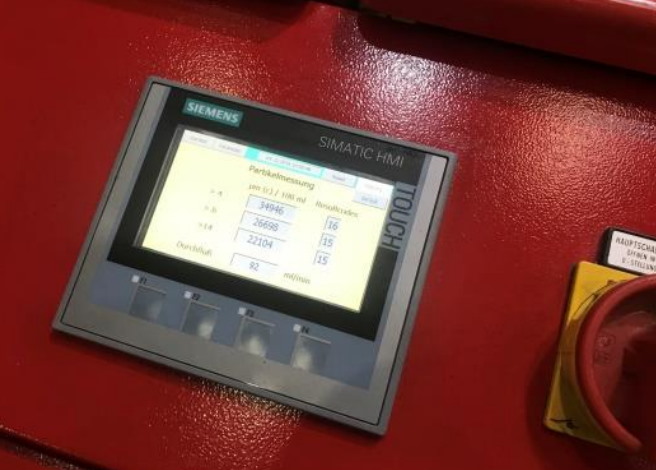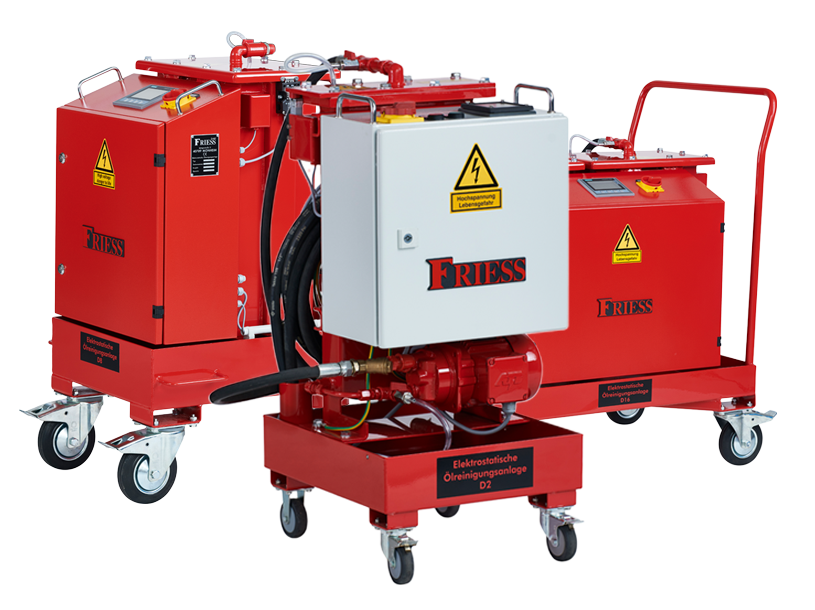Maintenance and Monitoring of Hydraulic Oils
A well-known global supplier to the automotive industry manufactures high-strength sheet metal parts for the automotive industry on state-of-the-art press lines in a plant in southern Germany. By using high-strength steels, the parts are significantly lighter with the same strength and therefore make a considerable contribution to reducing the weight of the car body. Due to the tolerances specified by the customers and the high demands placed on the forming of the high-strength steels, the individual parameters must be adhered to with extreme precision during the pressing process. The four existing presses are therefore equipped with very high-quality servo valve technology.
Situation
In addition, the maintenance department made sure that a very high-quality hydraulic oil was used. Nevertheless, the specified tolerances were repeatedly exceeded.
A precise fault analysis revealed that the particle contamination in the hydraulic oil was significantly higher than permissible for the precise servo technology.
Solution
After a lengthy investigation, the maintenance department decided to use a FRIESS-EFC Electrostatic Oil Cleaning System Model D16 to reduce the particle contamination in the hydraulic oil and to remove oxidation products and varnish in the oil.
Since the previous monitoring of oil purity and oil quality involved a great deal of work, such as the taking and shipping of the oil sample, the oil cleaning system was equipped with the new fully automatic particle monitor from FRIESS. The particle monitor monitors the purity of the hydraulic oil used automatically during operation of the electrostatic oil cleaning system. The determined contamination values are shown on the display of the electrostatic oil cleaning system model D16.
To ensure that the desired results were achieved, the equipment was initially rented. During the operation of the oil cleaner, oil samples were repeatedly taken and the oil was carefully analyzed. The results of the analyses indicated a clear reduction of the particle contamination in the oil. At the same time, oxidation products and varnish in the oil were removed. Concurrent to the improved results of the oil analysis, it was found that malfunctions in the hydraulic system of the press were significantly reduced. Machine precision had also improved, so that rejects were also minimized.
Due to this significant improvement in process reliability, the team decided to purchase the electrostatic oil cleaning system.
Such as oil temperature, moisture content, etc. can be viewed on a special password protected service page.
Display of the contamiation level according to ISO 4406

During operation of the oil cleaning system, a small amount of oil continuously flows through the particle monitor. Every 10 min, the dirt content in the hydraulic oil is measured and shown on the display of the oil cleaning system when accessed. As the data of the last 2000 measurements are stored and are shown graphically on the display upon request, the cleanliness of the oil is always documented and can be viewed without having to sample any oil manually. In case of possible deviations, it is possible to intervene immediately before the actual production process is affected.
The combination of electrostatic oil cleaning with integrated particle count monitoring offers considerable advantages to the operator.
Result
By using the electrostatic oil cleaning system, hydraulic faults on the presses could be reduced by more than 80 %. Since there were significantly fewer repair costs for servo valves and pumps, the payback time for the oil cleaning system was less than six months. Since the electrostatic oil cleaning system has been in use, the oil no longer needs to be changed due to the very good oil purity and oil quality.
Electrostatic oil cleaning system D16 with particle monitor at customer’s facility

- Very clean hydraulic oil by removing particles and microparticles down to down to 0.1 µm.
- Removal of oxidation products and varnish in the oil.
- Improved machine precision and increased process reliability, since hydraulic malfunctions due to contamination are avoided.
- Reduction of the workload of maintenance personnel, as oil samples no longer have to be take, ordered and shipped.
- Easier troubleshooting. If deviations in the process parameters should occur, the last particle measurements can be evaluated and it can be easily seen, if the problem was caused by particle contamination in the oil or whether another source is responsible.
